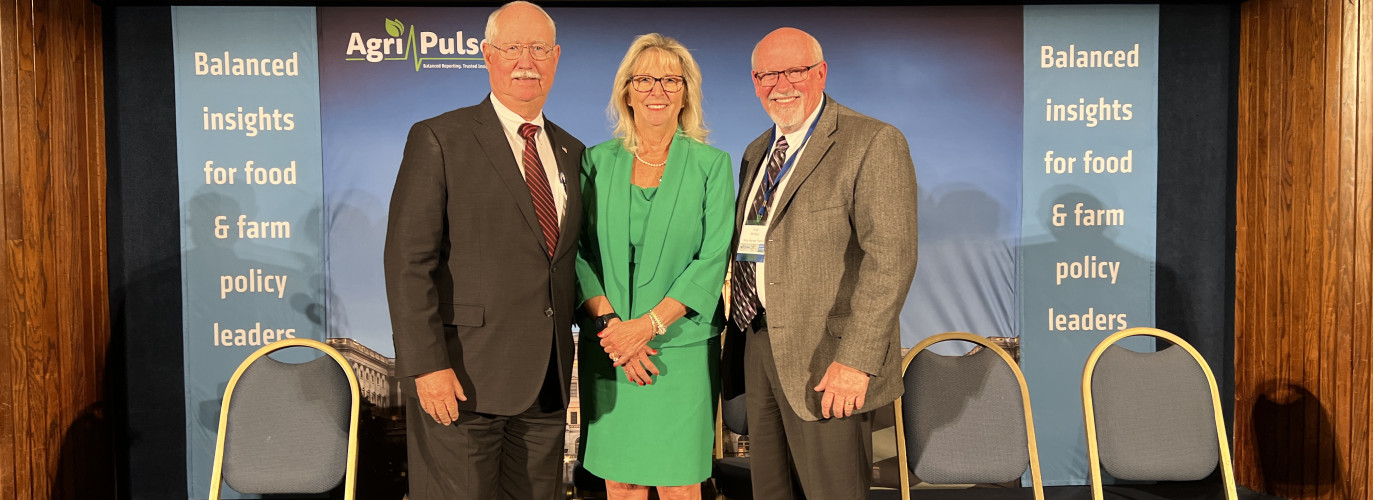Mar 25, 2024

By Rick McNary
I recently had the opportunity to represent Shop Kansas Farms (SKF) on a panel at the Agri-Pulse National Ag and Policy Summit in Washington, D.C. The conference theme was “Revitalizing Rural Revenues.”
Shortly after I launched SKF during the early stages of the pandemic, I received a call from Sara Wyant, the founder of Agri-Pulse. I knew of Sara and the impact of her digital magazine but had never met her. She, and the magazine she began 20 years ago, have a stellar reputation in the agricultural industry for shining a light on farm and food policy.
Her staff alerted her to SKF’s work, which is to connect consumers to local farmers and ranchers so they could purchase the food they raise. I was surprised and honored she made time to call me.
Since then, Sara and I have kept in contact. Earlier this year, she attended my panel presentation at the American Farm Bureau Federation conference in Salt Lake City and afterward asked me to serve on a panel at the National Ag and Policy Summit. The importance of creative ways to generate rural revenue was brought home at the end of the day when Secretary of Agriculture Tom Vilsack said we have lost more than 544,000 small family farms in America since 1981.
Our panel’s topic was “How Local Food Systems Can Generate More On-Farm Revenue.” I shared the work SKF has done in creating Harvest Hubs, which are practical, physical local food systems that run on parallel tracks of economic development and community engagement.
As I made my way to D.C. for the summit, I reflected on a conversation more than a decade ago at a farm conference with Curt Kastner, director of food science at Kansas State University. He was serving on a committee with the Department of Homeland Security, and they had a keen interest in building out local food systems as back-up mechanisms in case of a terroristic threat to the global food system.
Kastner broke the food system down into three basic parts: production, processing and distribution. The food that is on your plate has gone through all three stages of that process whether it is a banana you’re eating that came from Latin America or a tomato you grew in your garden (production), hauled into your kitchen (distribution), then washed and sliced (processing), all our food goes through these three basic stages.
As I began to research how local food systems worked, I began to wonder what role I could play in establishing a practical, physical local food system that involves all three. After more than 12 years of dreaming and scheming (but mostly pounding square pegs in round holes), I finally have the chance to implement them in communities around the state; they are known as a Shop Kansas Farms Harvest Hub.
After watching the economic impact on farmers who sell on Shop Kansas Farms in the past four years, and dozens of interviews with some of those farmers, I am more convinced than ever that the creation of a Harvest Hub – a practical, physical system of production, processing and distribution – is key to rural revitalization. There are three reasons why I believe this.
First, farmers, ranchers and growers who sell directly to consumers have the potential of making greater profit on their products because of the economic principle of inelastic demand. That principle means people will often pay more for a product if they know where it came from and how good the branding is around it – think Starbucks. No one knows for certain, but it's estimated that market share is somewhere between 15 and 20 percent.
Second, more consumers want to buy from local farms and ranches. Our Facebook group, which currently has 166,800 members, continues to grow by hundreds every week as new people join and learn how to purchase food raised by our Kansas farmers and ranchers.
Third, there are new opportunities for people who want to generate revenue from the food they grow. Many people would like to get into raising food they could sell but can’t afford 1,000 acres and the equipment that would go with it. But they might have access to a couple of acres of land where they can grow fruits and vegetables. An acre of tomatoes processed into Uncle Buck’s Salsa with a commercial kitchen has a much higher profit margin than whole tomatoes sold a local farmers market.
I agree with Sec. Vilsack; trying to figure out how to help small family farms is what keeps me up at night, too. However, I believe we have a solution with Harvest Hubs to provide opportunities for rural revitalization.
